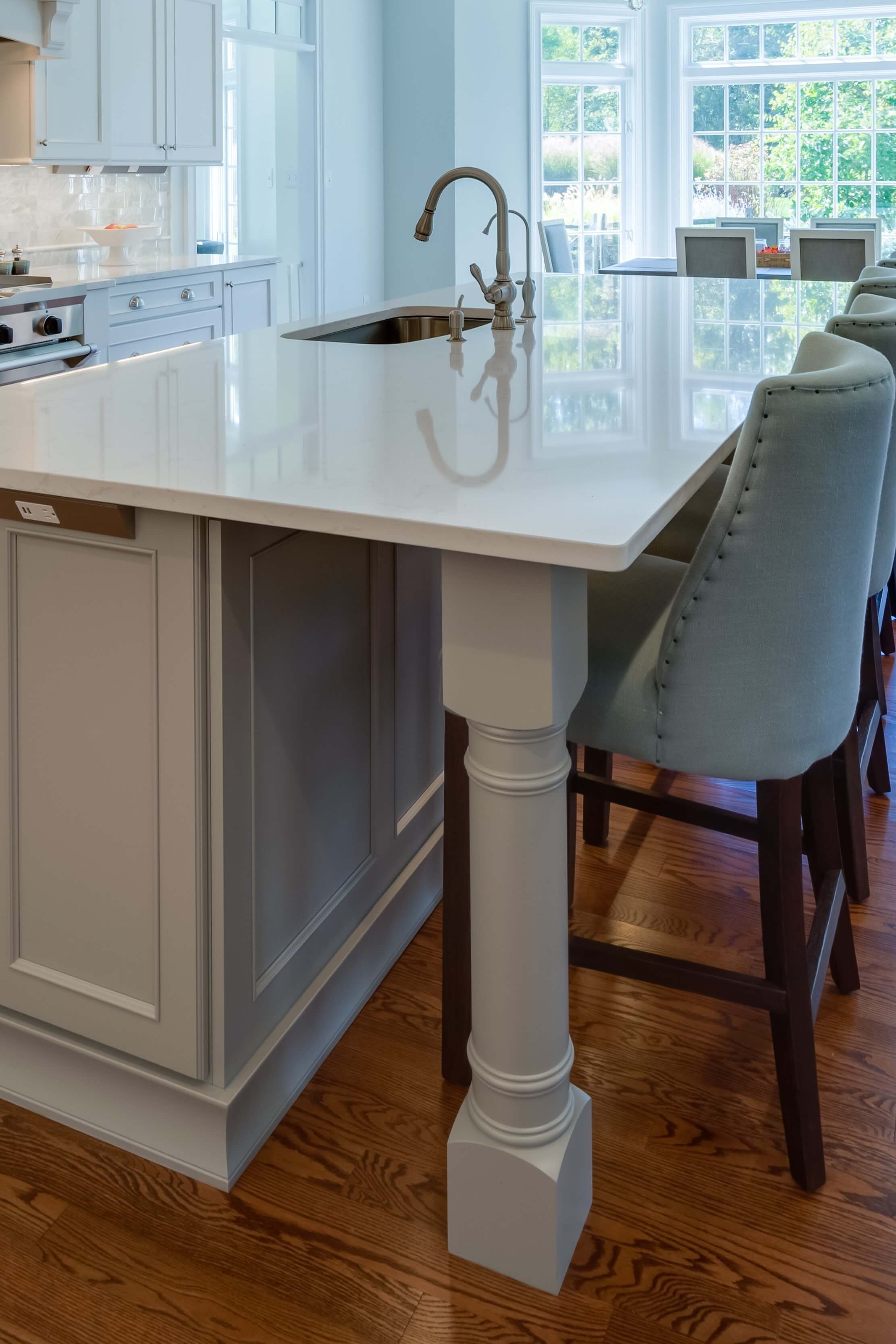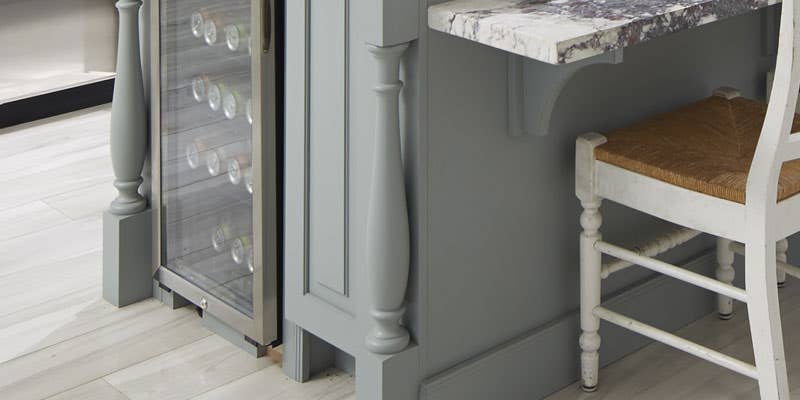Crucial Elements to Think About When Choosing Legs For Kitchen Island
Picking the ideal legs for a kitchen area island includes a cautious evaluation of numerous elements that can considerably affect both performance and aesthetic appeal. As we explore these elements, it becomes clear that each decision can have far-reaching implications for the overall kitchen area experience.
Product Options
When choosing legs for a cooking area island, recognizing the numerous product options is important for accomplishing both visual allure and architectural integrity (Legs For Kitchen Island). The choice of material substantially influences not only the toughness of the island yet likewise its general layout and capability
Timber is a popular choice, supplying warmth and convenience. Strong hardwoods, such as oak or maple, give toughness and can be stained or repainted to match the cooking area decor. Metal legs, commonly made from stainless-steel or functioned iron, contribute a commercial and contemporary feel while making sure sturdiness and security. These products are immune to put on and can support significant weight, making them ideal for larger islands.
One more choice is engineered materials, like MDF or plywood, which can be much more cost-efficient while still offering a variety of coatings. They might not offer the very same degree of stability as strong timber or metal. Legs For Kitchen Island. Materials such as acrylic or glass can develop a modern look, though they might require added support to ensure stability.
Inevitably, the option of material for kitchen area island legs must line up with the preferred performance and the total theme of the cooking area.
Style and Layout

When thinking about style, the shape and coating of the legs are critical. Conical legs can provide a feeling of lightness and sophistication, while thicker, extra durable legs can share strength and security. Furthermore, the surface-- be it repainted, tarnished, or natural-- ought to enhance the kitchen cabinetry and kitchen counter materials to produce a unified look.
Additionally, the layout of the legs can also reflect personal taste. Customized or ornamental legs, such as those featuring detailed carvings or unique geometric forms, can offer as centerpieces, including personality and personality to the kitchen area. Inevitably, the best choice will certainly not just boost performance yet also raise the aesthetic appeal, making the kitchen area island a standout feature of the home.
Height Factors To Consider
Selecting the suitable height for cooking area island legs is critical, as it directly influences both functionality and comfort. The basic elevation for a cooking area island usually ranges from 36 to 42 inches, lining up with typical countertop elevations. A 36-inch height is ideal for cooking and cooking, permitting comfortable usage of cooking area devices and tools. Alternatively, a height of 42 inches is frequently chosen for islands planned for bar seating, fitting taller feceses and using a casual dining experience.

It is also vital to make up individuals' choices and elevations. Personalizing click for source the height can guarantee a comfy experience for all member of the family, making the kitchen area island a more useful and satisfying area.
Weight Assistance
Guaranteeing appropriate weight support for kitchen island legs is essential for both security and functionality. The kitchen area island frequently serves numerous purposes, consisting of cooking, eating, and additional storage space, requiring a robust assistance structure. When selecting legs, it is crucial to take into consideration the general weight ability needed based on the island's planned use and the products that will be placed on it.
The choice of product try here for the legs plays a substantial duty in their weight-bearing abilities. Solid timber, steel, and sturdy composites usually give superior toughness compared to lighter products. In addition, the layout of the legs-- whether they are right, tapered, or have a pedestal form-- can influence their ability to disperse weight efficiently across the framework.
Furthermore, the leg placement need to be purposefully planned to improve stability. Legs positioned at the edges or with a wider base can better sustain heavier loads. Constantly seek advice from the supplier's specifications pertaining to lots limitations to make sure that the legs can maintain the desired weight without compromising security. In summary, choosing kitchen area island legs with adequate weight assistance is crucial for producing a safe and functional culinary space.
Setup and Upkeep
Proper installment and upkeep of kitchen island legs are crucial for guaranteeing longevity and security. To start, it is necessary to follow the manufacturer's standards throughout installment. This frequently includes safeguarding the legs to the space station making use of proper fasteners, making sure that the legs are level and lined up. Using a level tool can aid stop tottering and boost the general aesthetic allure of the cooking area island.
When installed, normal upkeep is required to protect the honesty and look of the legs - Legs For Kitchen Island. For wooden legs, periodic cleansing with a moist cloth and application of suitable wood gloss can avoid wetness damage and maintain their surface. Metal legs might require a gentle cleansing option to remove grease and gunk, followed by a completely dry fabric to protect against corrosion development
Furthermore, examine the legs on a regular basis for signs of wear or damages, such as fractures or loose joints. Tightening screws or screws as required can additionally lengthen the lifespan of the legs. By adhering to these installation and upkeep techniques, property owners can make sure that their kitchen island continues to be strong and visually appealing for years to find.
Final Thought

Visual coherence is paramount in choosing the design and design of legs for a cooking area island, as these components considerably influence the total setting of the space. Tapered legs can give a feeling of agility and style, while thicker, a lot more robust see here legs can convey toughness and security.Picking the suitable elevation for kitchen area island legs is crucial, as it directly affects both functionality and convenience. In recap, picking kitchen island legs with appropriate weight assistance is important for producing a safe and useful culinary room.
In final thought, selecting legs for a kitchen area island necessitates careful factor to consider of different aspects, including product options, design, elevation, weight support, and installment.